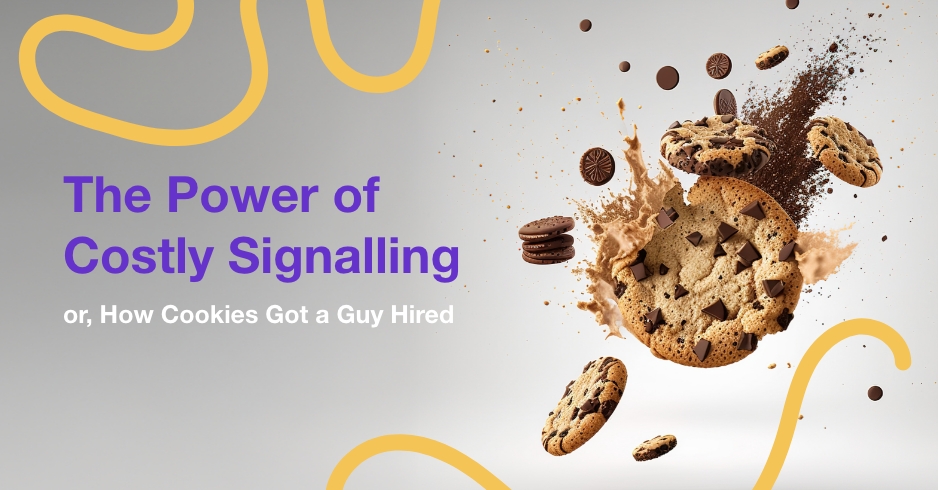Business Growth From Timing and Following Up
The biggest advantage in business growth (and life) isn’t a fancy strategy - it’s consistent, well-timed follow-ups.
Read more
Your message is only as strong as how you deliver it. Just ask Julian (and his famous cookies).
We like to believe that the quality of our work speaks for itself. That if we have the right skills and experience, or offer the best product, people will naturally take notice.
But here’s the kicker: how you deliver your message matters just as much as the message itself.
This is where the Costly Signalling Theory comes in.
At its core, costly signalling is about proving value through effort. The more time, energy, or resources you put into sending a message, the more people perceive that message as important. Think of it like a peacock’s tail. Totally impractical, but a clear sign to potential mates (or in our case, employers and clients) that the peacock has resources to spare.
Rory Sutherland puts it best in his book Alchemy (which you should totally read):
The meaning and significance we attach to something is felt in direct proportion to the expense with which it is communicated.
In other words, the harder you work to get someone’s attention, the more they assume you must be worth paying attention to.
Now, let me tell you a story about how one guy used this principle to land his dream job with a little creativity, some bold moves, and, of course, cookies.
Someone I care about a lot—let’s call him Julian—wanted to break into the world of design. The problem? He had zero professional experience, just a few short courses under his belt, and a personal training job that paid less than $500 (R8,000) a month.
Like many job seekers, he was stuck in the soul-crushing cycle of mass-applying to every listing on LinkedIn, uploading his CV to every recruitment database, and waiting for… well, nothing.
I had some deep conversations with Julian, and one thing became clear: he was optimising for the wrong thing. He didn’t need a job; he needed interviews.
So we threw the traditional playbook out the window and tried something completely different.
I told Julian he’d change his life in three months if he followed this plan. (Spoiler: It took four, but who’s counting?)
The result?
Within weeks, Julian had seven interviews and two job offers.
By making his outreach costly in time, effort, and creativity, he signalled that he wasn’t just another faceless CV in a pile. He showed initiative, personality, and a willingness to go the extra mile.
Every time you put in extra effort to engage with someone, you’re increasing the perceived value of that communication.
Think about it:
Most of us delete marketing emails without a second thought. But a package that lands on your desk? That gets attention.
There’s something about a physical object that makes it feel more intentional. When someone goes out of their way to send a well-thought-out package, a handwritten note, or even a small surprise, it immediately stands out.
It shows effort. And effort makes an impression.
So here’s your challenge:
Find one deal in your pipeline that’s stalling and level up your next message. Make it costlier. Add a little effort, creativity, or personal touch. You might be surprised at the results.
And if all else fails… try cookies. 🍪
We’d love you to share it with your friends, colleagues or your marketing team.
